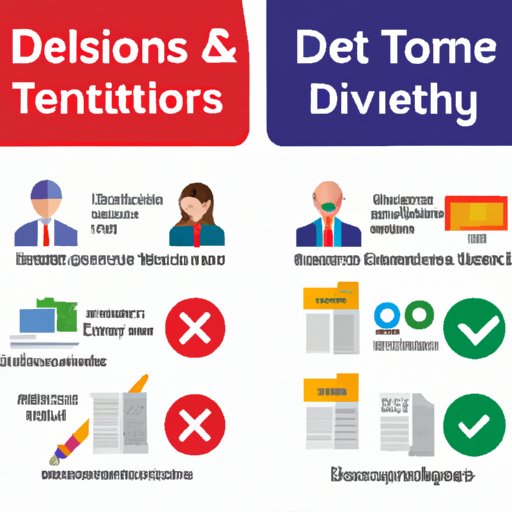How to Sign Off an Email: A Guide for Professionals
Emails have become an essential part of our personal and professional lives. In the workplace, emails are one of the most common ways for professionals to communicate with colleagues, clients, and partners. Your email sign-off is the last thing your recipients will read, so it’s important to get it right. In this article, we’ll explore the dos and don’ts of email sign-offs, effective ways to sign-off emails, a comprehensive guide to choosing the right one for every scenario, and tips and tricks for perfect sign-offs.
The Dos and Don’ts of an Email Sign-off: A Guide for Professionals
Before we dive into the different ways to sign-off an email, it’s essential to know what to avoid or do. Below are some dos and don’ts to guide you:
Do keep it professional and appropriate for the context
Your email sign-off should reflect the tone and context of your email. Avoid using informal sign-offs that may come off as unprofessional. Keep in mind the position of the recipient and the nature of your relationship with them.
Don’t overdo it with too many emojis or exclamation marks
While emojis and exclamation marks may convey a friendly tone, overusing them can make you appear unprofessional or childish. Use them sparingly, and only when appropriate.
Do consider your tone and relationship with the recipient
Think about what kind of tone you want to convey and what kind of relationship you have with the recipient. If you’re sending an email to a close colleague or friend, using a less formal sign-off such as “Best” or “Cheers” may be okay.
Don’t forget to proofread before hitting send
Always proofread your emails, including your sign-off, before sending them. Typos or errors can hurt your credibility and make you appear unprofessional.
5 Effective Ways to Sign Off Emails That Leave a Lasting Impression
Now that we’ve covered the basics, let’s explore some effective ways to sign-off your emails:
1. Using personalized sign-offs such as “Warmly” or “Take care”
Personalized sign-offs show that you’re authentic and care about the recipient. They can also help set a tone of friendliness or warmth.
2. Including a call-to-action for the recipient
Adding a call-to-action in your sign-off such as “Let me know your thoughts” or “Looking forward to hearing from you” can encourage the recipient to continue the conversation or take action.
3. Ending with a quote or inspiration
Ending your email with an inspiring quote or message can help create a positive impression and leave a lasting impact.
4. Reflecting gratitude or appreciation
Expressing gratitude or appreciation in your sign-off can help build and strengthen relationships with the recipient. You can use phrases such as “Thank you” or “I appreciate your time.”
5. Using humor in a professional context
Using humor in your sign-off can help break the ice and create a relaxed atmosphere. However, be careful not to go overboard and offend the recipient.
A Comprehensive Guide to Email Sign-offs: How to Choose the Right One for Every Scenario
Choosing the right sign-off can be challenging, especially when dealing with different scenarios. Here are some appropriate and effective sign-offs for various situations:
For Coworkers
- Best regards
- With gratitude
- Sincerely
For Clients or Business Partners
- Thank you
- Looking forward to doing business with you
- All the best
For Your Boss or Superior
- Respectfully
- Best regards
- Thank you
Ending Your Email on a Strong Note: Tips and Tricks for Perfect Sign-offs
Here are some tips and tricks for crafting the perfect sign-off:
Keeping it short and concise
Don’t overthink your sign-off. Keep it short, simple, and straightforward. Your sign-off should be no more than one or two lines.
Avoiding cliches and generic sign-offs
Avoid using common and generic sign-offs such as “Best” or “Regards.” They’re overused and don’t add any value to your message.
Exploring creativity and personalized options
Don’t be afraid to experiment with different sign-offs that reflect your personality and brand. Be creative, but make sure it’s appropriate for the context and recipient.
From Sincerely to Cheers: Crafting a Memorable Email Sign-off for Every Situation
Finally, here are some memorable sign-offs for different scenarios:
For Coworkers
Warmly,
Cheers,
Thanks again,
For Clients or Business Partners
Looking forward to the next meeting,
Until next time,
All my best,
For Your Boss or Superior
Respectfully yours,
Sincerely yours,
Best regards always,
Conclusion
Writing the perfect email sign-off can be challenging, but with these dos and don’ts, effective ways to sign-off, comprehensive guide, and tips and tricks, you’ll be able to craft memorable and professional sign-offs for every scenario. Remember to keep it concise, appropriate, and creative to leave a lasting impression. Experiment and have fun with your email sign-offs to stand out and build strong relationships with your colleagues, clients, and partners.
